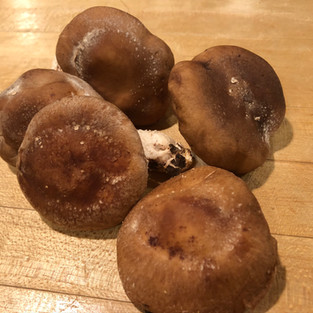Japchae Noodles
- Cranberry Walk

- Jan 21, 2020
- 3 min read

Back in the day when I was at college, I loved going to the local Korean deli and scooping up some of these noodles for lunch. I loved the chewy texture of the noodles and the flavors that developed, thanks to an assortment of mushrooms, vegetables, and sesame dressing. These noodles were like nothing I ever had at home, and I quickly developed an appetite for them. It was years later that I realized they were made from sweet potatoes. Recently, I started thinking about these and decided to make them at home. This recipe is my version of my favorite college snack, Japchae Noodles.
Ingredients for Japchae Noodles:
Noodles:
16 ounces Korean Style Starch Noodles
6 dried shitake mushrooms, soaked in hot water, stems discarded and caps sliced
5 fresh shitake mushrooms, stems discarded and caps sliced
8 ounces baby spinach
4 cloves garlic, minced
2-3 small carrots, julienned
3 scallions, cut into 1/2" pieces
1 onion, halved and sliced
1 red bell pepper, seeded and cut into strips
1/2 napa cabbage, cores and thinly sliced
grapeseed oil
sesame oil
kosher salt
black pepper
Sauce:
Combine the following ingredients and stir until the sugar dissolves.
1/2 cup + 1 teaspoon water
1/2 cup + 1 teaspoon soy sauce
2 tablespoons + 2 teaspoons sesame oil
1/4 cup sugar
Time-Saving Tips: Cut the vegetables and prepare the sauce earlier in the day.
We're ready to cook.
We're ready to cook.
Boil the noodles for 5-6 minutes and drain. Place the noodles in a large bowl and toss with 2 teaspoons of sesame oil.
Drop the spinach into boiling water and blanch for a minute; transfer the spinach to the noodles and toss.
Heat 2 tablespoons of grapeseed oil in a non-stick pan and add all of the vegetables except for the scallions; season with salt and pepper. Saute for a couple of minutes until the cabbage starts to soften and add the scallions. Continue cooking another minute.
Transfer the vegetables to the noodles and toss. Once combined, pour in the sauce and stir some more until all of the noodles are coated. I like to let the noodles sit for at least ten minutes, so the flavor develops and then sprinkle with sesame seeds.

They're ready! Japchae Noodles are light and delicious, just how I remembered them. These noodles are perfect for making when entertaining because they taste better as they sit, and they're served at room temperature. Of course, I love the leftovers for lunch the next day.
Enjoy!
Japchae Noodles:
Noodles:
16 ounces Korean Style Starch Noodles
6 dried shitake mushrooms, soaked in hot water, stems discarded and caps sliced
5 fresh shitake mushrooms, stems discarded and caps sliced
8 ounces baby spinach
4 cloves garlic, minced
2-3 small carrots, julienned
3 scallions, cut into 1/2" pieces
1 onion, halved and sliced
1 red bell pepper, seeded and cut into strips
1/2 napa cabbage, cores and thinly sliced
grapeseed oil
sesame oil
kosher salt
black pepper
Sauce:
Combine the following ingredients and stir until the sugar dissolves.
1/2 cup + 1 teaspoon water
1/2 cup + 1 teaspoon soy sauce
2 tablespoons + 2 teaspoons sesame oil
1/4 cup sugar
Boil the noodles for 5-6 minutes and drain. Place the noodles in a large bowl and toss with 2 teaspoons of sesame oil.
Drop the spinach into boiling water and blanch for a minute; transfer the spinach to the noodles and toss.
Heat 2 tablespoons of grapeseed oil in a non-stick pan and add all of the vegetables except for the scallions; season with salt and pepper. Saute for a couple of minutes until the cabbage starts to soften and add the scallions. Continue cooking another minute.
Transfer the vegetables to the noodles and toss. Once combined, pour in the sauce and stir some more until all of the noodles are coated. I like to let the noodles sit for at least ten minutes, so the flavor develops and then sprinkle with sesame seeds.
Time-Saving Tips: Cut the vegetables and prepare the sauce earlier in the day.













































































Comments